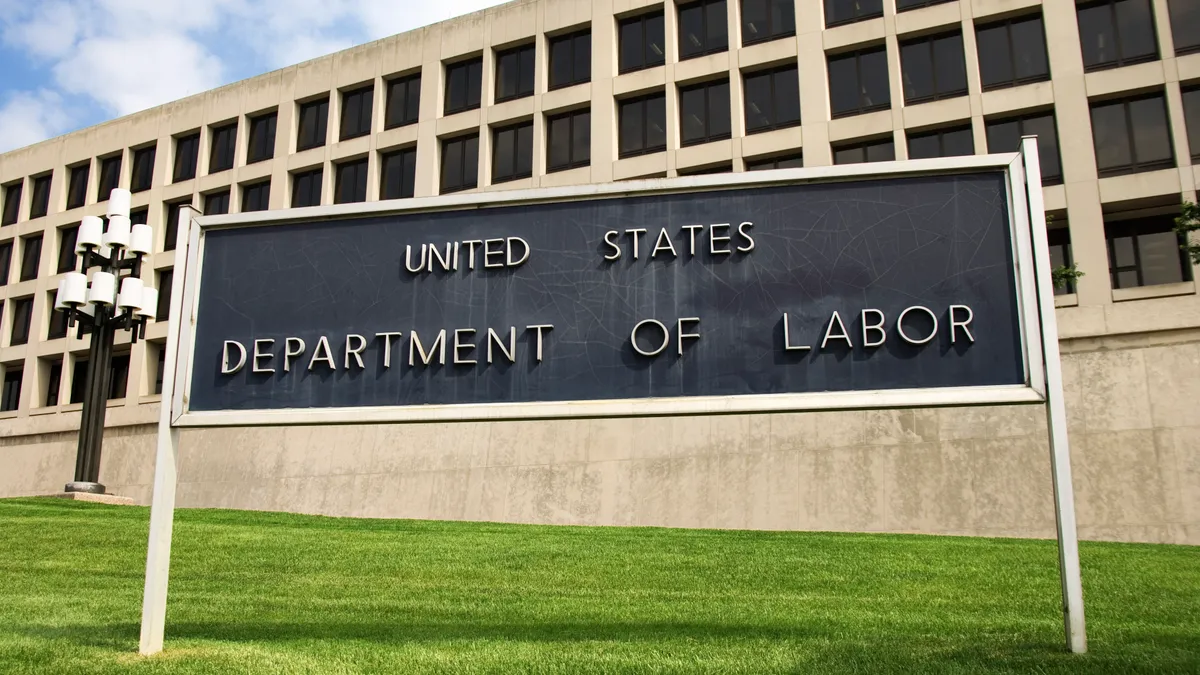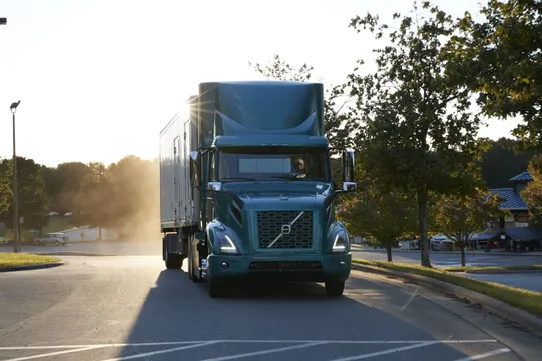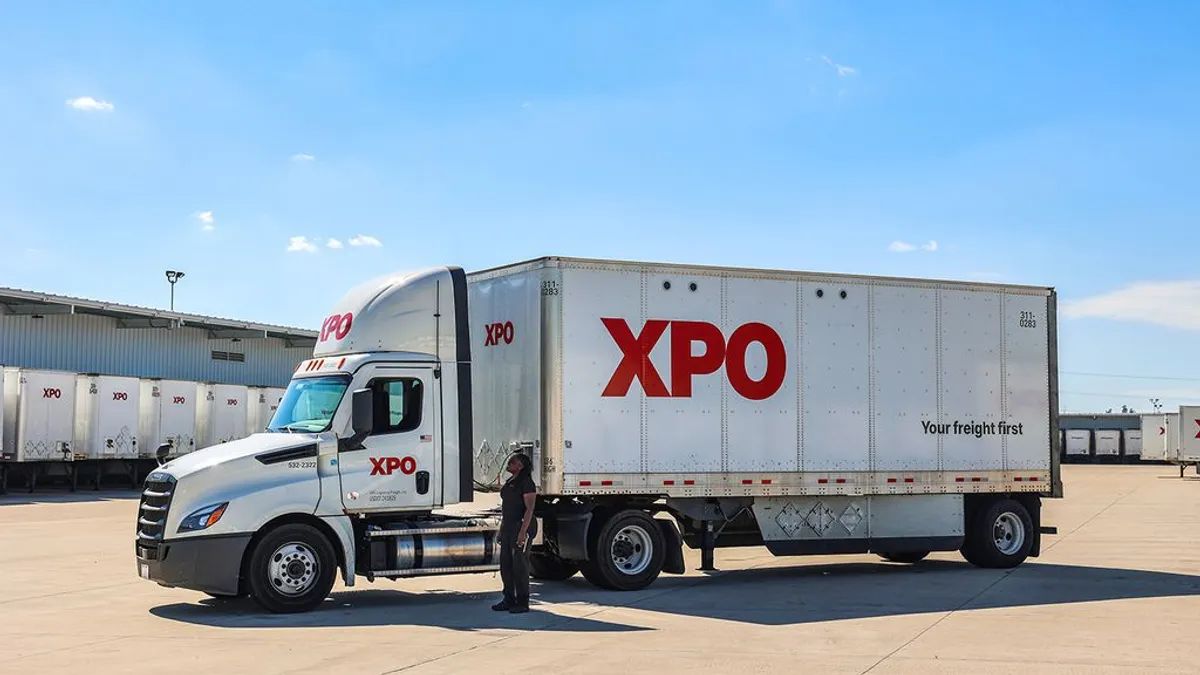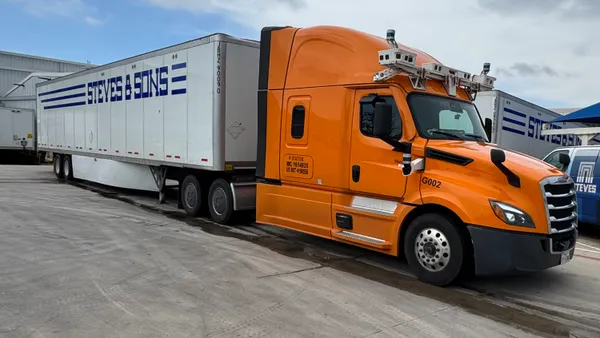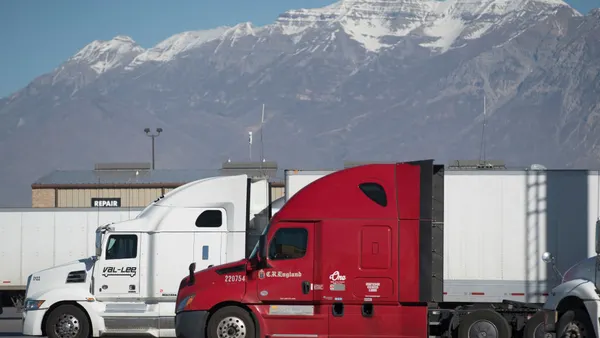Dive Brief:
- The U.S. Department of Labor is set to propose a rule on Thursday that will impose a new test to determine the definition of whether a worker is an employee or an independent contractor.
- The proposal would return DOL’s independent contractor classification standard to a multi-factor “totality-of-the-circumstances analysis” framework, a shift from the Trump administration’s 2021 rule that established a test in which these factors were to be separated into a set of “core factors” and “non-core factors.”
- DOL said it often sees employers misclassify employees as contractors and that the rule is aimed at preserving those workers’ rights to minimum wage and overtime. The agency will accept comments from stakeholders for 45 days, once the proposal is published in the Federal Register.
Dive Insight:
Depending on the final language of the rule, the DOL’s proposal could have a significant impact on the approximately 350,000 owner-operators who haul freight for other carriers but own their own businesses and equipment. The proposal comes just months after the U.S. Supreme Court declined to hear a challenge to a California law that stands to reclassify owner-operators as employees.
President Joe Biden has urged Congress to pass a federal version of California’s three-part “ABC” test to determine a worker’s correct classification, said Jessica Looman, principal deputy administrator of the Wage and Hour Division of the Department of Labor, in a media briefing Tuesday. But absent such a law, the administration’s proposed federal rule would rely on a six-part, economic reality test the Supreme Court has held is the applicable standard.
Per the proposed rule, the six nonexhaustive factors DOL would consider in the assessment of the economic realities of a working relationship include:
- Opportunity for profit or loss depending on managerial skill.
- Investments by the worker and the employer.
- Degree of permanence of the work relationship.
- Nature and degree of control.
- Extent to which the work performed is an integral part of the employer’s business.
- Skill and initiative.
Matt Schrap, CEO of the Harbor Trucking Association, said the trucking industry is awaiting more clarity on how the DOL’s proposal will affect owner-operators. The independent West Coast drayage drivers he represents are finding it “increasingly difficult” to operate their businesses in a challenging regulatory environment, he said.
“We need some level of certainty,” he said. “That’s the main thing. ... It’s becoming increasingly difficult for independent contractors in trucking to remain as such. It’s unfortunate, because it’s taking away these entrepreneurial opportunities for people.”
Drayage drivers, who typically haul port cargo short distances, are primarily owner-operators. Carriers in California have already begun adjusting their operations in anticipation of the state’s enforcement of AB5.
The proposed federal worker misclassification rule is unlikely to exempt trucking entirely, Looman hinted in the media briefing.
“It will be very fact-specific, depending on the nature of the trucker’s relationship, in terms of whether or not they are properly classified as a independent contractor or should otherwise be classified as an employee,” Looman said.
The Department of Labor also suggested the proposal would not entirely outlaw the independent contractor model. “The Department believes this proposal will help protect workers from misclassification while at the same time recognizing that independent contractors serve an important role in our economy and providing a consistent approach for those businesses that engage (or wish to engage) independent contractors,” the notice of proposed rulemaking said.




